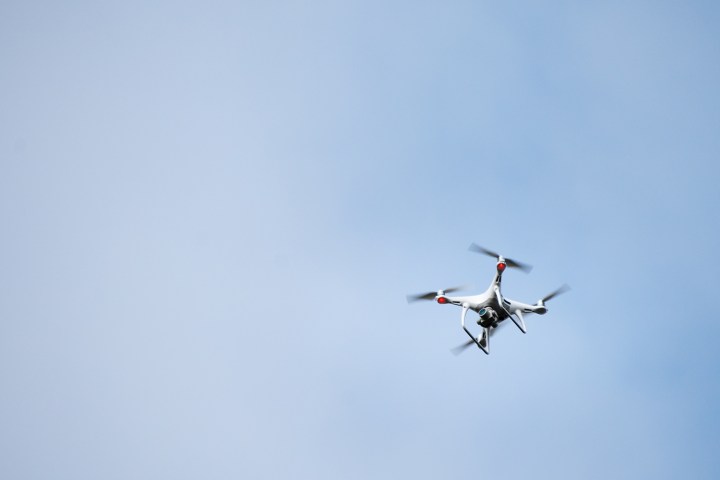
In fact, drone maker CyPhy Works, which is based in Massachusetts, has developed a new tethered drone that offers a 4G LTE payload and could be deployed to help provide coverage to the thousands of people who might want it.
The drone is called the Persistent Aerial Reconnaissance and Communications (PARC), and two PARC drones with the equipped radio equipment are able to offer increased coverage to roughly one square mile — which is around the footprint of a large stadium.
So why does it need to be tethered? Well, a tethered connection means power can be delivered to the drone, which in turn means that at can fly indefinitely. In fact, engineers at CyPhy say that they’ve flown drones for hundreds of hours at a time without bringing it down, according to a Recode report. That tether obviously does limit how high the drone can fly, but even tethered the PARC drone can fly a hefty 400 feet high — more than enough for most large-scale events.
This type of technology could be more useful than simply providing connectivity to large crowds — it could also be used in natural disasters when cell towers and radios are all taken offline.
Of course, all this technology isn’t cheap but it’s far cheaper than alternatives. Normally, vehicles with full networking equipment can cost as much as $1.5 million per unit, but the PARC drone sits at $200,000.
CyPhy itself has made headlines before — namely for testing package delivery with UPS.
It will be interesting to see the future of internet connectivity — Facebook is developing drones that connect those below, while Google is well known for its “Project Look” initiative that does the same thing with weather balloons. Could we soon go to the Super Bowl and have a fast connection thanks to a drone hovering above? Only time will tell.
Editors' Recommendations
- 5G home internet: What is it, and should you get it?
- Scientists think the next big solar storm could create an ‘internet apocalypse’
- SpaceX Starlink internet could be coming to an airline near you
- DJI could drop a new drone this week. Here’s what to expect
- Google is planning to test drones for fighting fires


